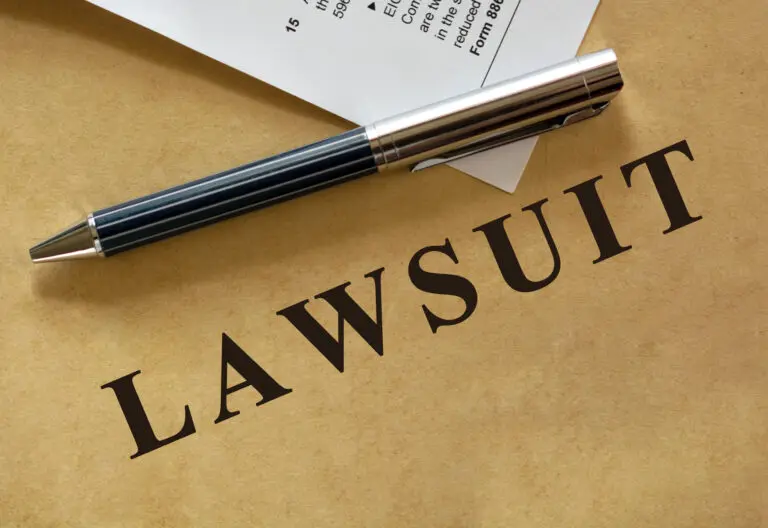Fingerprinting is a crucial process in the criminal justice system, providing a reliable method of identifying individuals involved in criminal activities. Whether it’s during an detención or for background checks, fingerprinting services play a significant role in maintaining accurate records and ensuring the integrity of legal processes. This article delves into the comprehensive aspects of fingerprinting, its importance, and the procedural intricacies involved.
The Importance of Fingerprinting in Legal Procedures
Fingerprinting serves as a fundamental tool for law enforcement agencies. Its primary purpose is to establish the identity of individuals and link them to criminal activities. The unique patterns found in fingerprints make them an irrefutable form of identification. This legal fingerprinting process is essential in creating a robust and reliable criminal record system.
The accuracy of fingerprinting ensures that individuals are correctly identified, which is critical during criminal investigations. In cases where an detención is made, fingerprinting helps confirm the identity of the suspect and cross-references their prints with existing records to check for prior criminal history. This step is crucial for law enforcement agencies to make informed decisions about the handling and processing of suspects.
Moreover, fingerprinting is not only used for criminal identification but also for various legal purposes such as background checks for employment, security clearances, and licensing. The reliability of fingerprinting services in these contexts helps maintain public safety and trust in legal and administrative systems.
The Fingerprinting Process: Step-by-Step
Comprender la fingerprinting process is essential for appreciating its role in the legal system. The process typically involves the following steps:
- Preparation: The individual’s hands are cleaned to remove any dirt or oils that might interfere with the fingerprinting process. This ensures that the prints are clear and legible.
- Ink Application or Digital Scanning: Traditionally, ink is applied to the fingers, and prints are rolled onto a fingerprint card. However, modern fingerprinting often uses digital scanners that capture the prints electronically.
- Rolling the Prints: Each finger is rolled from one side to the other to capture the full fingerprint pattern. Plain impressions of all fingers are also taken.
- Verification: The collected prints are checked for clarity and accuracy. If any prints are smudged or incomplete, they are retaken.
- Submission: The fingerprints are submitted to the relevant law enforcement or administrative body for analysis and storage.
Digital fingerprinting has become more prevalent due to its efficiency and accuracy. It reduces the chances of smudging and allows for quicker processing and analysis of fingerprints. Law enforcement agencies and private entities offering fingerprinting services often prefer digital methods for their reliability.
Legal Implications of Fingerprinting
Fingerprinting has significant legal implications, particularly in criminal cases. It serves as a critical piece of evidence that can corroborate other findings in an investigation. For instance, fingerprints found at a crime scene can be matched with a suspect’s prints, providing strong evidence of their presence at the scene.
In the courtroom, fingerprint evidence can be pivotal. Attorneys often rely on legal fingerprinting to establish connections between suspects and criminal activities. The admissibility of fingerprint evidence is generally high due to the scientific basis of fingerprint analysis. However, the defense can challenge the methods used to collect and analyze the prints, emphasizing the need for proper procedures and handling.
Fingerprinting also plays a role in the legal rights of individuals. The process must be conducted in compliance with legal standards to ensure that the rights of the individuals being fingerprinted are protected. Any deviation from these standards can lead to legal challenges and the exclusion of the fingerprint evidence from procedimientos judiciales.
Fingerprinting Services: Finding Reliable Providers
Finding reliable fingerprinting providers is crucial for both legal and administrative purposes. Many entities offer fingerprinting services, including law enforcement agencies, private companies, and specialized service providers. When seeking fingerprinting services, it is essential to consider the following factors:
- Certification and Accreditation: Ensure that the provider is certified by relevant authorities and complies with legal standards for fingerprinting.
- Technology and Equipment: Modern digital fingerprinting equipment ensures accuracy and efficiency. Verify that the provider uses up-to-date technology.
- Experience and Expertise: Experienced providers with a track record of accuracy and reliability are preferable.
- Convenience and Accessibility: Consider the location and availability of the provider. Some services offer mobile fingerprinting, which can be convenient for individuals and businesses.
Attorneys.Media offers resources to find reputable fingerprinting providers. By accessing the platform, you can view video interviews and profiles of providers, helping you make an informed decision about who to trust with your fingerprinting needs.
Challenges and Limitations of Fingerprinting
While fingerprinting is a reliable identification method, it is not without challenges and limitations. One of the primary issues is the quality of the fingerprint sample. Poor quality prints due to smudging, dirt, or improper technique can lead to misidentification or the inability to match prints accurately.
Another challenge is the potential for false positives. Although rare, it is possible for fingerprints to be similar enough to cause confusion in the identification process. This emphasizes the need for meticulous analysis and verification of fingerprint evidence.
Furthermore, the legal standards for fingerprint collection and analysis must be strictly followed. Any deviation from these standards can compromise the integrity of the fingerprint evidence and lead to legal disputes. Ensuring that all procedures are conducted lawfully and accurately is essential for maintaining the reliability of fingerprinting.
The Future of Fingerprinting in Legal Contexts
The future of fingerprinting in legal contexts looks promising with advancements in technology and methodology. Innovations such as biometric fingerprinting and enhanced digital analysis tools are set to improve the accuracy and efficiency of the fingerprinting process.
Biometric fingerprinting involves the use of advanced algorithms and sensors to capture more detailed and precise fingerprint data. This technology reduces the risk of errors and enhances the ability to match fingerprints accurately. Additionally, improvements in database management and connectivity will allow for quicker cross-referencing and identification.
As these technologies evolve, the role of fingerprinting in legal and administrative processes will continue to grow. Ensuring that these advancements are integrated into existing systems and that personnel are adequately trained will be key to maximizing the benefits of these innovations.
Fingerprinting in Various Legal Contexts
Fingerprinting is used in a wide array of legal contexts beyond criminal investigations. Here are some key areas where fingerprinting plays a vital role:
- Employment Background Checks: Many employers require fingerprinting as part of the background check process to ensure that potential employees do not have a criminal history that could pose a risk in the workplace.
- Security Clearances: Individuals seeking security clearances for sensitive government or private sector positions must undergo fingerprinting to verify their identities and backgrounds.
- Licensing and Certification: Certain professions, such as teachers, healthcare providers, and security personnel, require fingerprinting to obtain the necessary licenses and certifications.
- Immigration and Naturalization: Fingerprinting is an essential part of the immigration process, helping to verify the identities of applicants and ensure they meet the legal requirements for entry and residency.
These applications highlight the versatility and importance of fingerprinting in maintaining security, trust, and integrity in various sectors.
Enhancing the Reliability of Fingerprinting
To enhance the reliability of fingerprinting, several best practices should be followed:
- Regular Calibration of Equipment: Ensuring that fingerprinting equipment is regularly calibrated and maintained to prevent errors in data collection.
- Training and Certification: Providing thorough training and certification for personnel who conduct fingerprinting to ensure they understand the correct procedures and legal requirements.
- Quality Control: Implementing quality control measures to verify the accuracy of collected fingerprints before they are submitted for analysis or storage.
- Clear Communication: Maintaining clear communication with individuals being fingerprinted about the process and the importance of providing clean, unobstructed fingerprints.
Adhering to these best practices helps maintain the integrity of the fingerprinting process and ensures that the collected data is reliable and accurate.
Case Studies: Successful Use of Fingerprinting in Criminal Cases
Several high-profile criminal cases have demonstrated the effectiveness of huellas dactilares in solving crimes and securing convictions. Here are a few examples:
- The Case of the Unsolved Murders: In a series of cold cases, fingerprinting technology helped law enforcement identify a suspect who had evaded capture for decades. By re-examining old evidence with modern fingerprinting techniques, investigators were able to match prints from crime scenes to the suspect, leading to his arrest and conviction.
- The Bank Robbery Ring: A bank robbery ring operating across multiple states was dismantled thanks to fingerprinting. Investigators collected fingerprints from various crime scenes and linked them to a group of individuals with prior criminal records. This evidence was crucial in obtaining convictions and preventing further crimes.
- The Kidnapping Case: In a high-profile kidnapping case, fingerprints left on a ransom note led to the identification and capture of the perpetrator. The clear and indisputable fingerprint evidence played a pivotal role in the trial, resulting in a guilty verdict.
These cases underscore the importance of fingerprinting in the criminal justice system and its impact on achieving justice.
Fingerprinting and Privacy Concerns
While fingerprinting is an invaluable tool for law enforcement and other sectors, it also raises privacy concerns. Individuals may be apprehensive about the collection and storage of their biometric data. Addressing these concerns is crucial to maintaining public trust.
- Data Protection: Ensuring that fingerprint data is stored securely and only accessible to authorized personnel. Implementing robust cybersecurity measures to protect against data breaches.
- Transparency: Being transparent with individuals about why their fingerprints are being collected, how the data will be used, and the measures in place to protect their privacy.
- Cumplimiento legal: Adhering to laws and regulations regarding the collection, storage, and use of biometric data. Ensuring that fingerprinting practices comply with privacy laws and protect individuals’ rights.
By addressing privacy concerns, organizations can foster trust and ensure that fingerprinting remains a reliable and accepted practice.
Conclusion: The Integral Role of Fingerprinting
Fingerprinting remains an integral part of the criminal justice and legal systems. Its role in accurately identifying individuals and linking them to criminal activities cannot be overstated. As technology advances, the process will become even more reliable and efficient, further solidifying its importance.
For individuals and entities requiring fingerprinting services, finding reliable providers and understanding the legal implications of fingerprinting are crucial. Attorneys.Media offers a valuable resource for connecting with qualified providers and gaining insights into the fingerprinting process.
By staying informed and utilizing reputable fingerprinting services, you can ensure that your legal and administrative needs are met with the highest standards of accuracy and reliability.
Finding the Right Attorney for Fingerprinting-Related Legal Matters on Attorneys.Media
When dealing with fingerprinting-related legal matters, it’s essential to find an attorney who specializes in criminal defense and has a thorough understanding of forensic evidence. Abogados penalistas are particularly well-versed in the intricacies of fingerprint evidence and its implications in criminal cases. These attorneys can challenge the validity of fingerprint evidence, ensuring that the methods used to collect and analyze fingerprints meet legal standards and do not violate the defendant’s rights.
A abogado penalista with expertise in forensic evidence can scrutinize the procedures used by law enforcement during the fingerprinting process. They can identify any potential mishandling or inaccuracies that might compromise the integrity of the evidence. This scrutiny is crucial, as improperly collected or analyzed fingerprints can lead to wrongful accusations or convictions. An experienced attorney will leverage their knowledge to question the admissibility of fingerprint evidence, potentially leading to its exclusion if any procedural errors are found.
To find a qualified abogado penalista on Attorneys.Media, start by visiting the platform and using the search function to filter by “criminal defense” under the criminal law category. Attorneys.Media features video interviews and detailed profiles of attorneys, providing insights into their experience, specialization, and approach to handling cases. Watching these interviews can help you gauge the attorney’s expertise in dealing with fingerprint evidence and their success in previous cases. Additionally, you can read client reviews and testimonials to understand the attorney’s reputation and effectiveness in defending clients against fingerprint-related charges. This comprehensive approach ensures that you find an attorney who not only has the necessary legal expertise but also aligns with your needs and expectations, providing you with the best possible defense.









